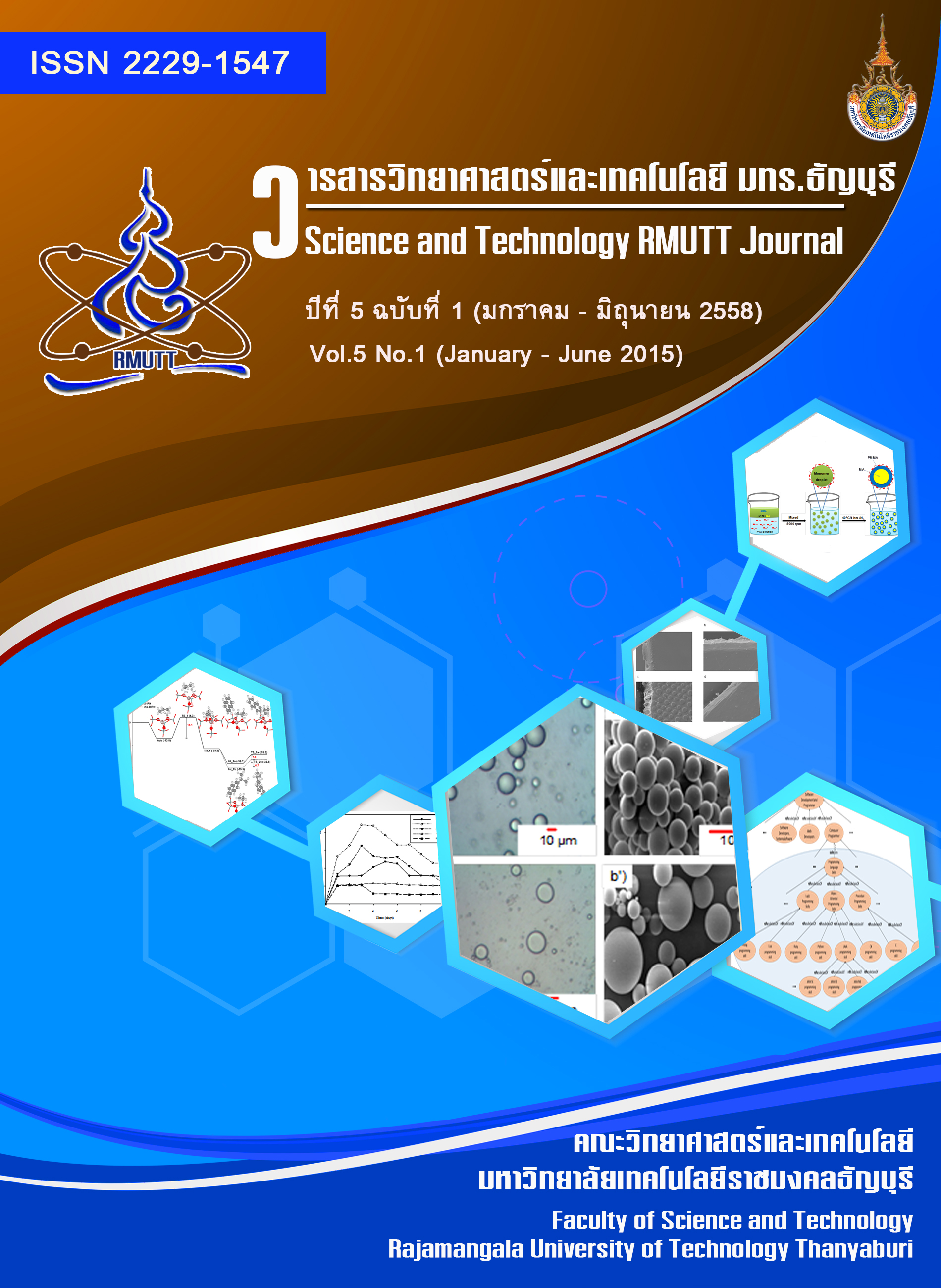Reaction mechanism of isopropylation of naphthalene on Faujasite Zeolite: A quantum chemical study
Main Article Content
Abstract
The reaction mechanisms of isopropylation of naphthalene by propene on faujasite zeolite (FAU) has been systematically investigated using the density functional theory with the M06-2X functional. The catalytic cycle of the β, β-selectivity towards the 2-isoproplynaphthalene (2-IPN) and 2,6-diisopropylnaphthalene (2,6-DIPN) is proposed to proceed through the three elementary steps. The reaction is initiated by the protonation of a propene resulting in an isopropoxide species bounded on the FAU framework with the highest activation barrier for overall reaction pathway of 18.1 kcal/mol. The second step is the isopropylation of naphthalene by isopropoxide from the first step leading to the formation of a key intermediate, naphthalynic carbocations, which is subsequently transformed to 2,6-DIPN via the proton back-donation in the final step. It appears that the large 56T cluster including zeolite pore structure is able to stabilize naphthalynic carbocations as a stable intermediate by the confinement effects. The results of this study demonstrate the importance of using a large zeolite cluster for understanding the relationship between the steric constraints and van der Waals dispersion induced by the pore structure of FAU and its catalytic activity.
Article Details
References
H.-G. Franck and J.W. Stadelhofer. Industrial Aromatic Chemistry; Springer-Verlag: Berlin, Heidelberg, New York, 1987; pp. 317-329.
G. A. Olah, J.A. Olah. Aromatic substitution. XXXVII. Stannic and aluminum chloride catalyzed Friedel-Crafts alkylation of naphthalene with alkyl halides. Differentiation of kinetically and thermodynamically controlled product compositions, and the isomerization of alkylnaphthalenes. J. Am. Chem. Soc. 98 (1976): 1839-1842.
J. A. Horsley, J. D. Fellmann, E. G. Derouane, C. M. Freeman. Computer-Assisted Screening of Zeolite Catalysts for the Selective Isopropylation of Naphthalene. J. Catal. 147 (1994): 231-240.
S. –J. Chu, Y. –W. Chen. Shape-selective alkylation of naphthalene with isopropanol over large pore zeolites. Appl. Catal A: General 123 (1995): 51-58.
Y. Sugi, H. Maekawa, Y. Hasegawa, H. Naiki, K. Komura, Y. Kubota. The alkylation of naphthalene over three-dimensional large pore zeolites: The influence of zeolite structure and alkylating agent on the selectivity for dialkylnaphthalenes. Catal. Today. 132 (2008): 27-37.
R. Brzozowski, W. Tecza. Shape-selective reactions of naphthalene over zeolites. Appl. Catal A: General. 166 (1998): 21-27.
D. H. Olson, E. Dempsey. The crystal structure of the zeolite hydrogen faujasite. J. Catal. 13 (1969): 221-231.
Y. Zhao, D. G. Truhlar. The M06 suite of density functionals for main group thermochemistry, thermochemical kinetics, noncovalent interactions, excited states, and transition elements: two new functionals and systematic testing of four M06-class functionals and 12 other functionals. Theor. Chem. Acc. 120 (2008): 215-241.
M. J. Frisch, G. W. Trucks, H. B. Schlegel, G. E. Scuseria, M. A. Robb, J. R. Cheeseman, G. Scalmani, V. Barone, B. Mennucci, G. A. Petersson, H. Nakatsuji, M. Caricato, X. Li, H. P. Hratchian, A. F. Izmaylov, J. Bloino, G. Zheng, J. L. Sonnenberg, M. Hada, M. Ehara, K. Toyota, R. Fukuda, J. Hasegawa, M. Ishida, T. Nakajima, Y. Honda, O. Kitao, H. Nakai, T. Vreven, J. A. Montgomery, Jr., J. E. Peralta, F. Ogliaro, M. Bearpark, J. J. Heyd, E. Brothers, K. N. Kudin, V. N. Staroverov, R. Kobayashi, J. Normand, K. Raghavachari, A. Rendell, J. C. Burant, S. S. Iyengar, J. Tomasi, M. Cossi, N. Rega, J. M. Millam, M. Klene, J. E. Knox, J. B. Cross, V. Bakken, C. Adamo, J. Jaramillo, R. Gomperts, R. E. Stratmann, O. Yazyev, A. J. Austin, R. Cammi, C. Pomelli, J. W. Ochterski, R. L. Martin, K. Morokuma, V. G. Zakrzewski, G. A. Voth, P. Salvador, J. J. Dannenberg, S. Dapprich, A. D. Daniels, Ö. Farkas, J. B. Foresman, J. V. Ortiz, J. Cioslowski, and D. J. Fox, Gaussian 09, Revision B.01, Gaussian, Inc., Wallingford CT, 2010.
B. Jansang, T. Nanok, J. Limtrakul. Structures and Reaction Mechanisms of Cumene Formation via Benzene Alkylation with Propylene in a Newly Synthesized ITQ-24 Zeolite: An Embedded ONIOM Study. J. Phys. Chem. B 110 (2006): 12626-12631.
A. M. Vos, R. A. Schoonheydt, F. D. Proft, P. Geerling. Reactivity Descriptors and Rate Constants for Acid Zeolite Catalyzed Ethylation and Isopropylation of Benzene. J. Phys. Chem. B 107 (2003): 2001-2008.
N. Hansen, T. Brüggemann, A. T. Bell, F. J. Keil. Theoretical Investigation of Benzene Alkylation with Ethene over H-ZSM-5. J. Phys. Chem. C 112 (2008): 15402-15411.
X. Rozanska, R. A. van Santen, F. Hutschka, J. Hafner. A Periodic DFT Study of Intramolecular Isomerization Reactions of Toluene and Xylenes Catalyzed by Acidic Mordenite. J. Am. Chem. Soc. 123 (2001): 7655-7667.


